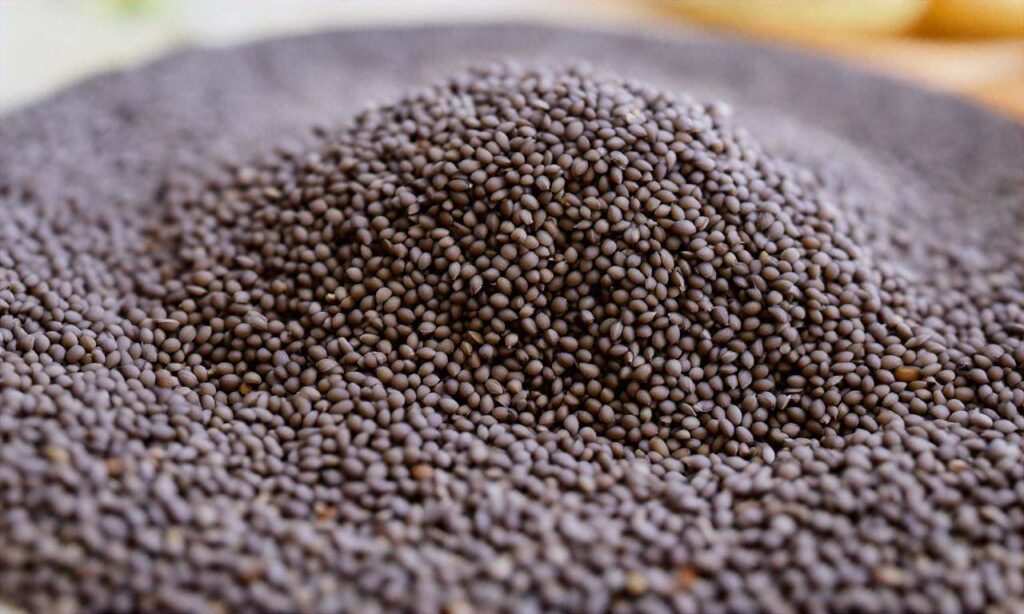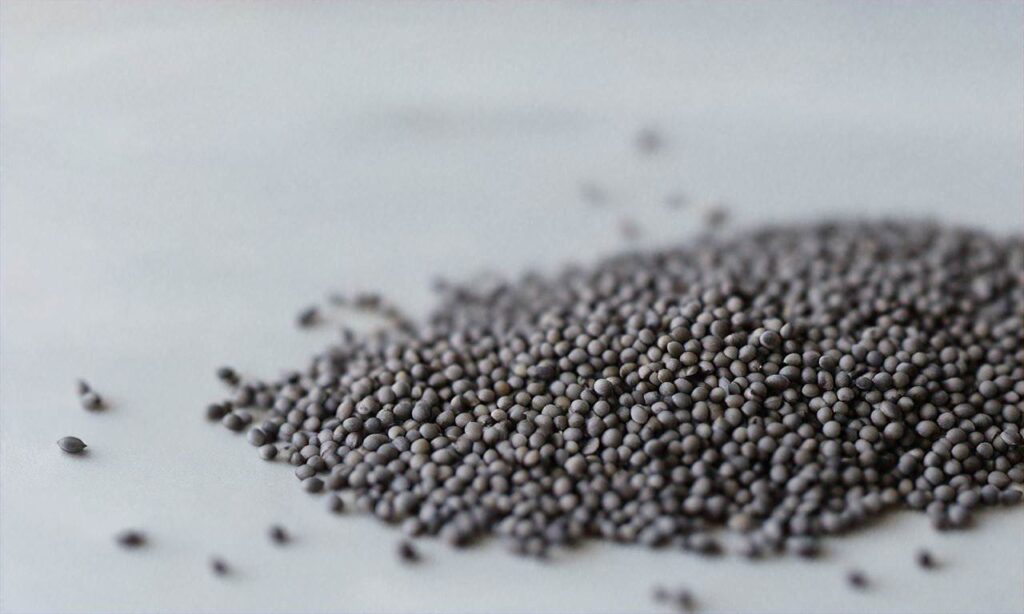Thai Basil Seeds: A Culinary and Cultural Gem

Hey there, herb enthusiasts and culinary adventurers! Today, we’re diving into the fascinating world of Thai basil seeds. These tiny powerhouses are not just for growing your favorite aromatic herb; they’re also a secret ingredient in some seriously delicious dishes and drinks. So, let’s explore the many facets of Thai basil seeds and discover why they’re worth adding to your pantry and garden.

What Are Thai Basil Seeds?
First things first, let’s talk about what Thai basil seeds actually are. These little black beauties come from the Thai basil plant, scientifically known as Ocimum basilicum var. thyrsiflora. Thai basil is a close cousin of the sweet basil you might be more familiar with, but it’s got its own unique flavor profile that’s essential in Southeast Asian cuisine.
The seeds themselves are small, oval-shaped, and black. When soaked in water, they do something pretty cool – they swell up and form a gelatinous coating. This transformation is what makes Thai basil seeds so versatile in both cooking and traditional medicine.
Growing Your Own Thai Basil
If you’re a gardening enthusiast, you’ll be happy to know that growing Thai basil from seeds is a rewarding experience. These plants are relatively easy to cultivate, making them perfect for both novice and experienced gardeners alike.
To start your Thai basil journey:
1. Sow the seeds in well-draining soil
2. Keep them in a warm, sunny spot
3. Water regularly, but don’t overdo it
4. Harvest leaves as needed, and watch your plant thrive!
Growing your own Thai basil ensures a fresh supply of both leaves and seeds, giving you the best of both worlds for your culinary adventures.
Culinary Uses of Thai Basil Seeds
Now, let’s get to the tasty part – cooking with Thai basil seeds! These little gems are incredibly versatile in the kitchen. Here are some popular ways to use them:
1. Drinks: Add them to smoothies, lemonades, or cocktails for a unique texture and subtle flavor.
2. Desserts: Incorporate them into puddings, ice creams, or jellies for an interesting twist.
3. Savory dishes: Sprinkle them over salads or use them as a garnish for soups and curries.
One of the most popular uses for Thai basil seeds is in a refreshing drink called “Nam Manglak” in Thailand. It’s made by soaking the seeds in water, adding some sugar and a squeeze of lime – perfect for hot summer days!
Health Benefits of Thai Basil Seeds
Thai basil seeds aren’t just delicious; they’re also packed with potential health benefits. While more research is needed to confirm some of these benefits, traditional medicine has long valued these seeds for their properties:
1. Rich in fiber: Can aid in digestion and promote feelings of fullness
2. Potential antioxidant properties: May help combat free radicals in the body
3. Possible anti-inflammatory effects: Could help reduce inflammation in the body
Remember, while these potential benefits are exciting, it’s always best to consult with a healthcare professional before using any food as a medicinal treatment.
Cultural Significance of Thai Basil Seeds
In Southeast Asian cultures, particularly in Thailand, basil seeds have been used for centuries in both culinary and medicinal applications. They’re often associated with cooling properties, making them a popular ingredient in hot climates.
In traditional Thai medicine, basil seeds are believed to help with everything from digestive issues to skin problems. While scientific evidence for these uses is limited, the cultural significance of Thai basil seeds remains strong in many communities.
Thai Basil Seeds vs. Chia Seeds: What’s the Difference?
You might be thinking, “Hey, these sound a lot like chia seeds!” And you’re not wrong – there are some similarities. Both Thai basil seeds and chia seeds swell up when soaked in liquid, creating a gelatinous texture. However, there are some key differences:
1. Flavor: Thai basil seeds have a mild, slightly sweet flavor, while chia seeds are more neutral.
2. Nutrition: While both are nutritious, chia seeds are higher in omega-3 fatty acids.
3. Cultural use: Thai basil seeds have a longer history of use in Southeast Asian cuisine and medicine.

Both seeds can be used in similar ways, so feel free to experiment with them in your cooking!
Storing and Preserving Thai Basil Seeds
If you’ve got your hands on some Thai basil seeds, you’ll want to know how to store them properly. Here are some tips:
1. Keep them in an airtight container
2. Store in a cool, dry place away from direct sunlight
3. They can last up to 3-4 years when stored properly
By following these simple steps, you’ll ensure your Thai basil seeds stay fresh and ready for use whenever inspiration strikes.
Wrapping Up
There you have it, folks – a deep dive into the world of Thai basil seeds! From their culinary uses to their cultural significance, these tiny seeds pack a big punch. Whether you’re growing them in your garden, adding them to your favorite drinks, or exploring their potential health benefits, Thai basil seeds are definitely worth getting to know.
So why not give them a try? Pick up some Thai basil seeds from your local Asian grocery store or online, and start experimenting. Who knows? You might just discover your new favorite ingredient. Happy cooking, and don’t forget to share your Thai basil seed creations with us!




